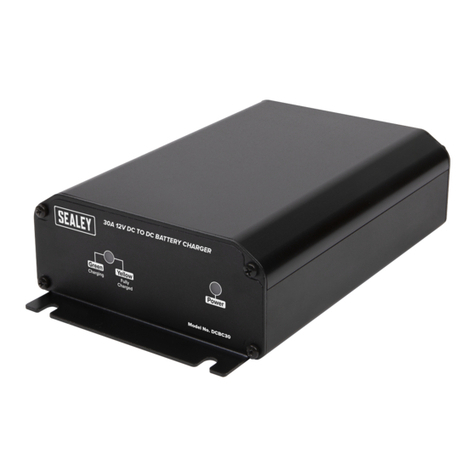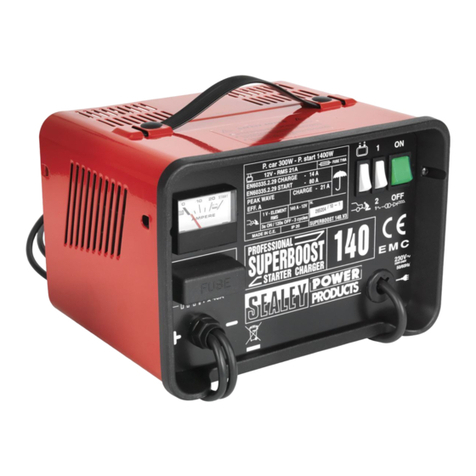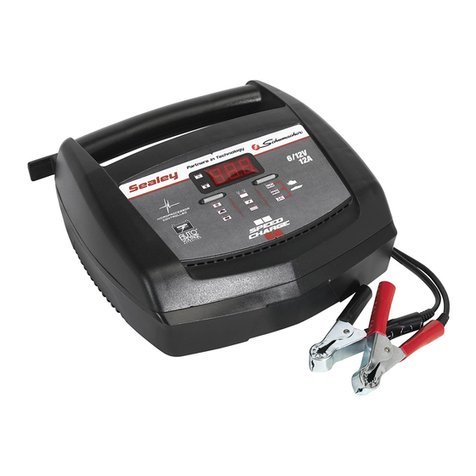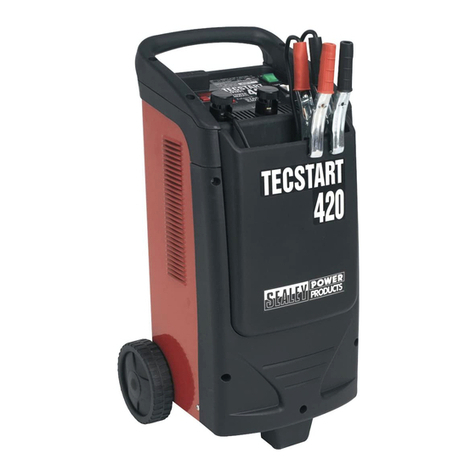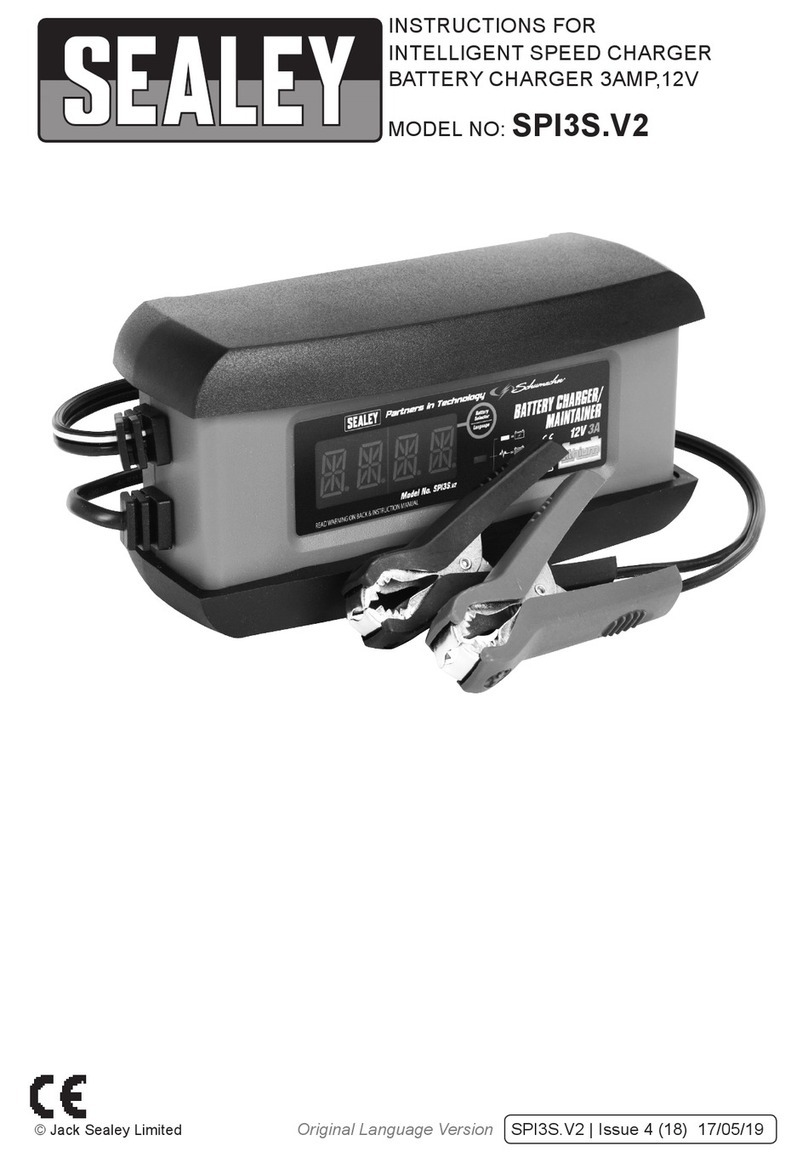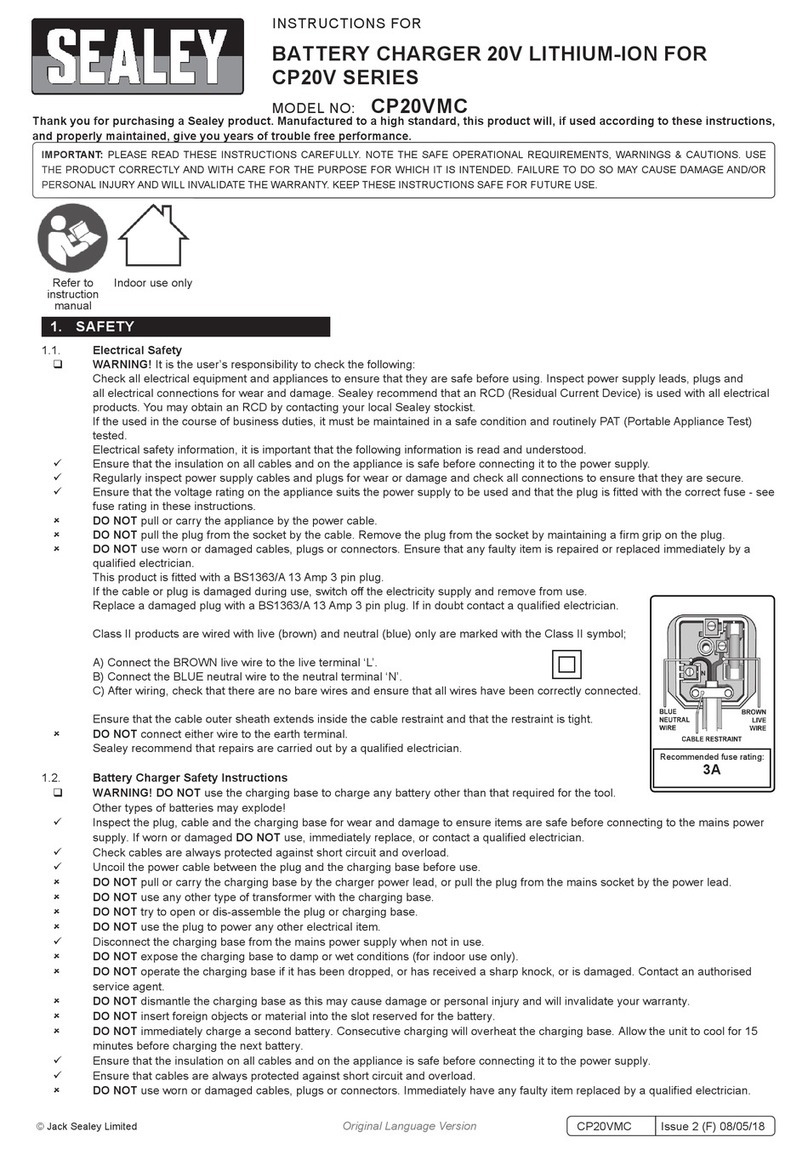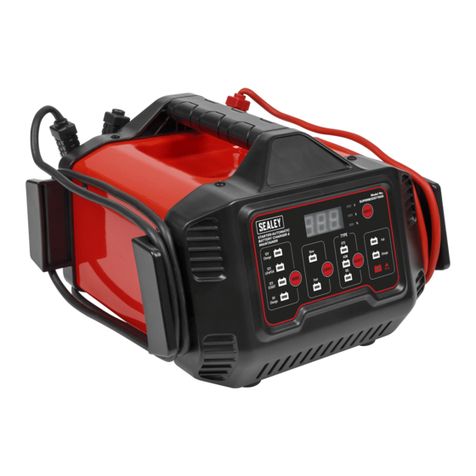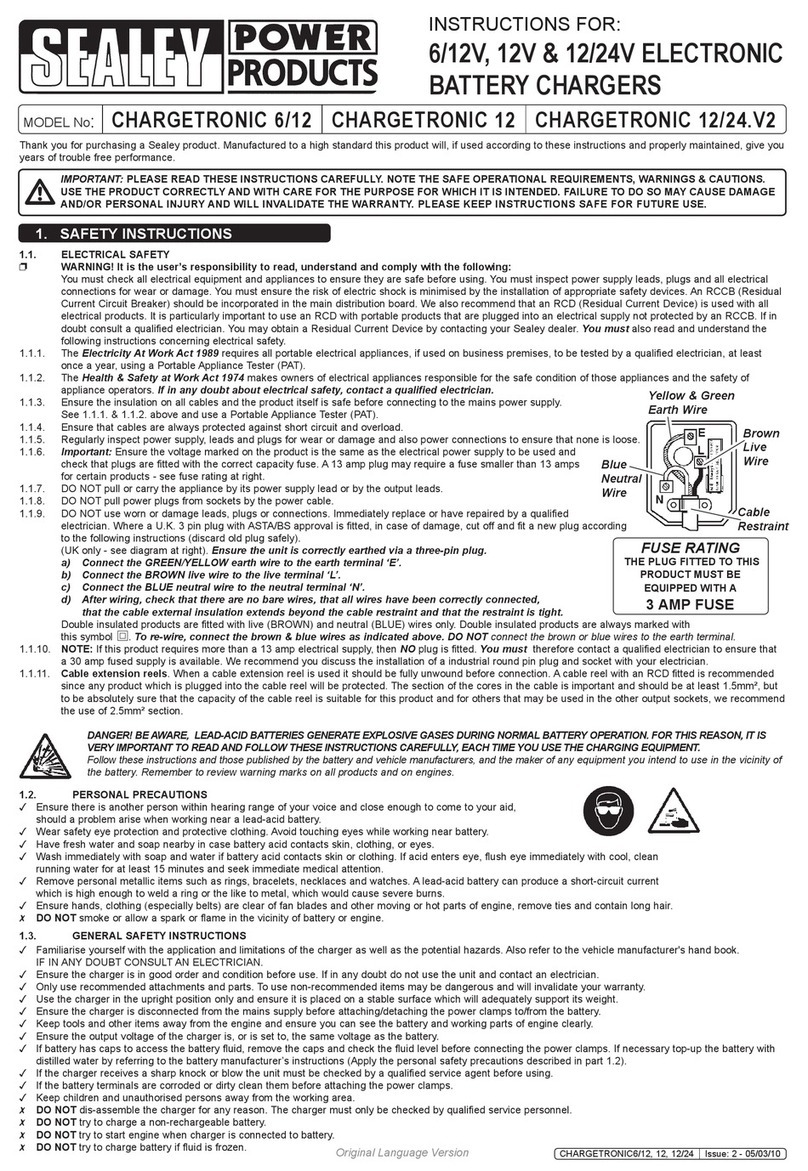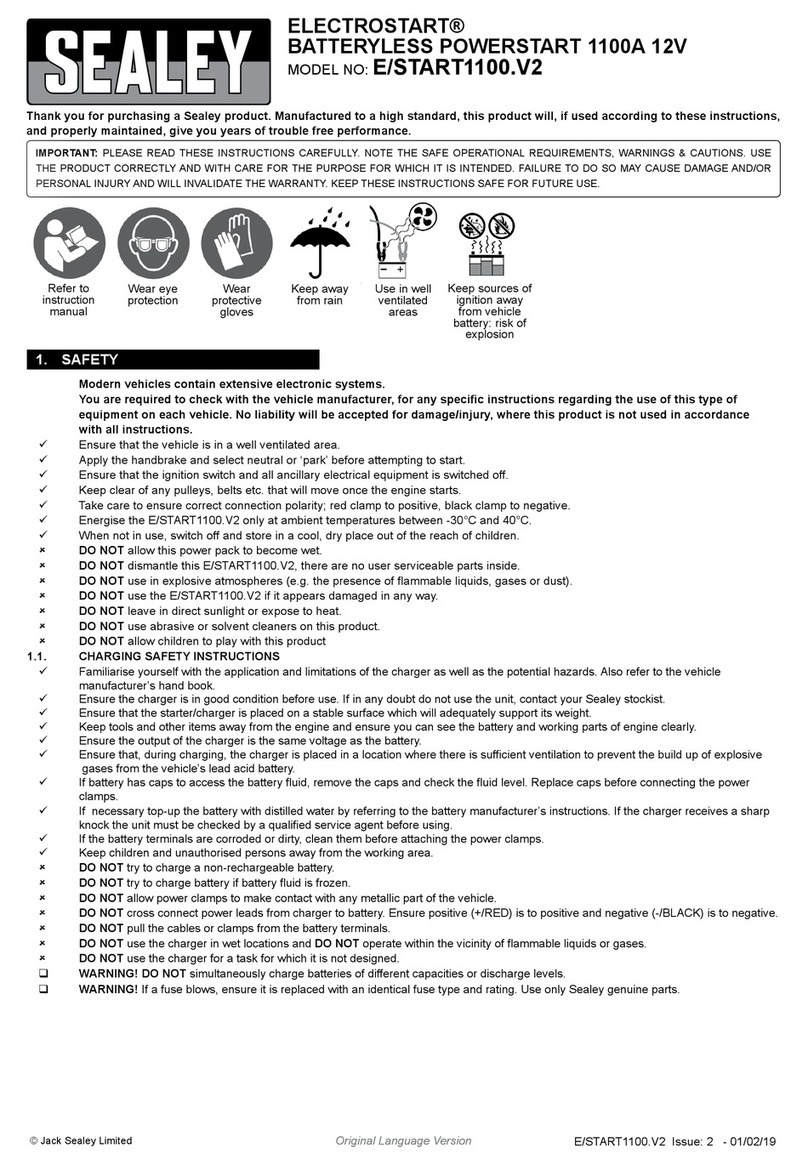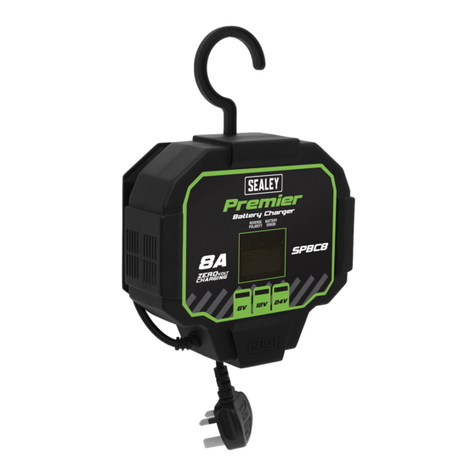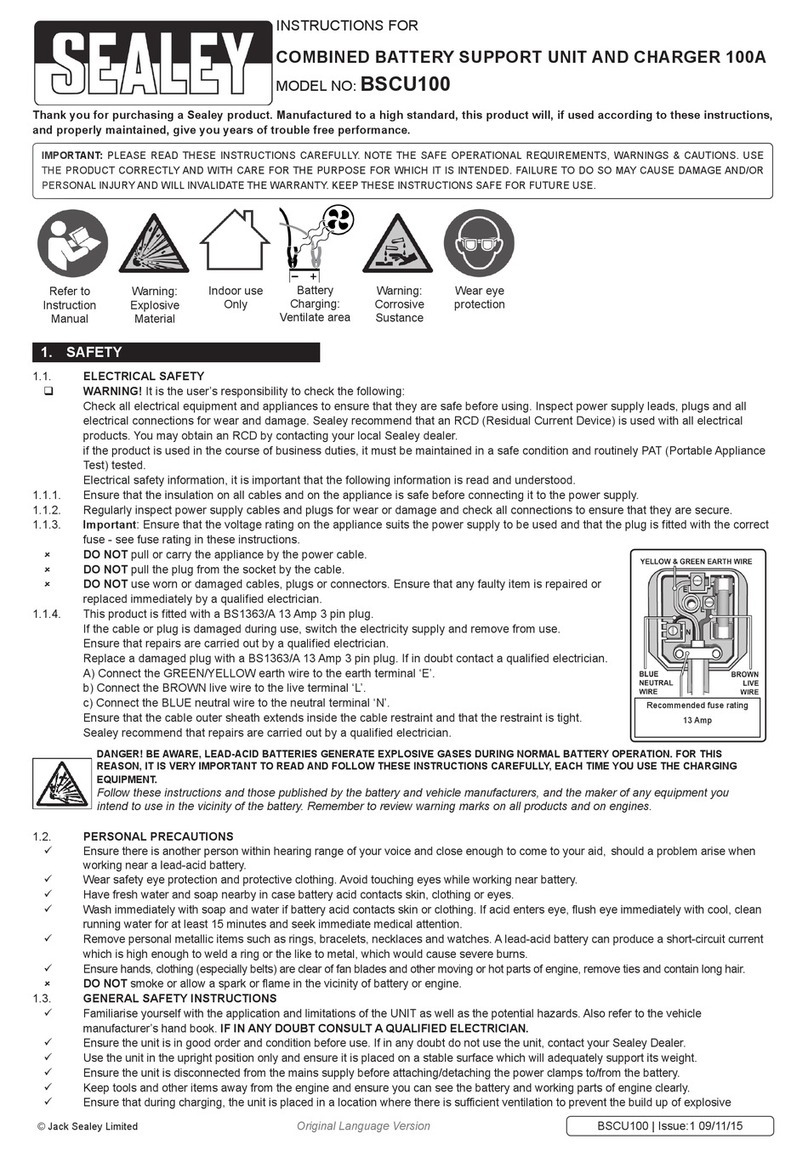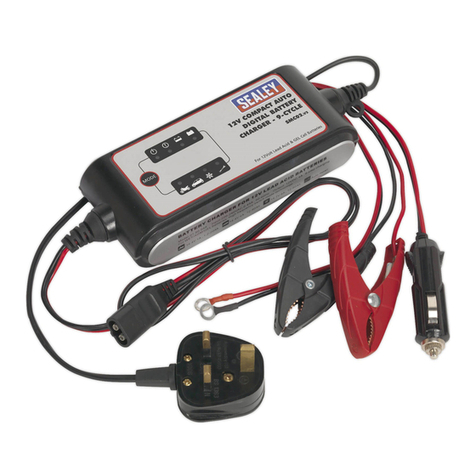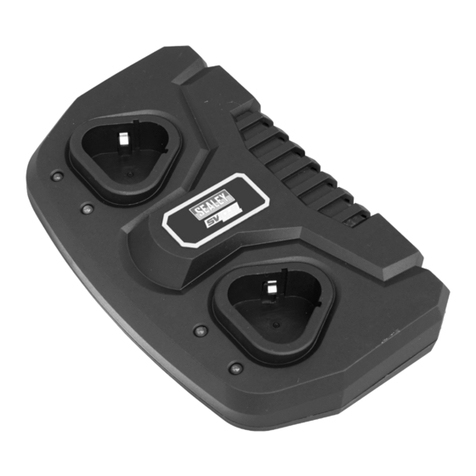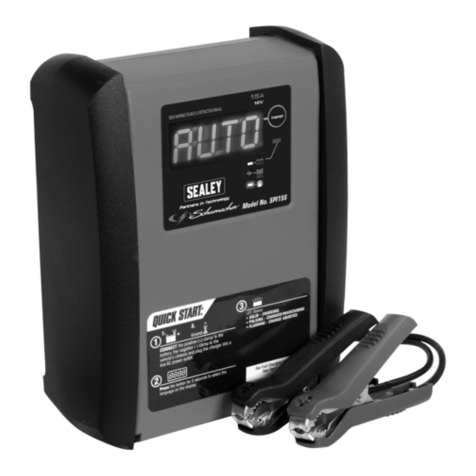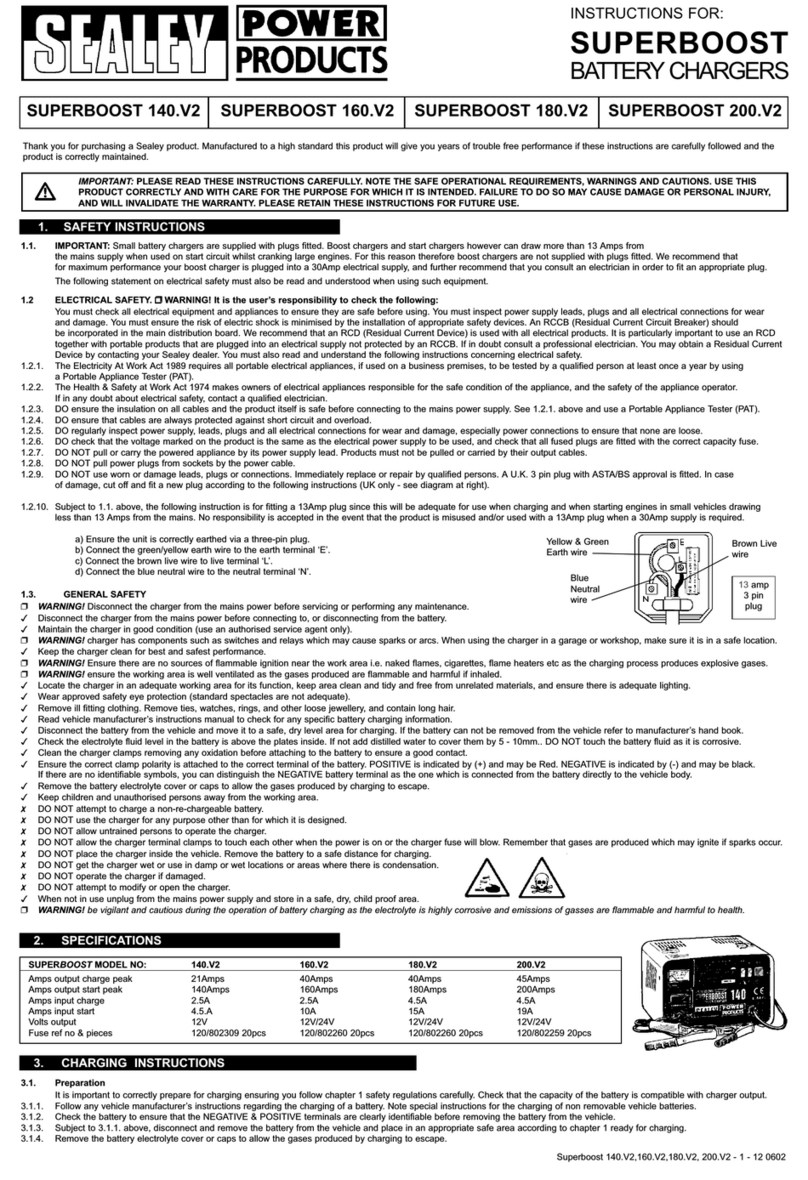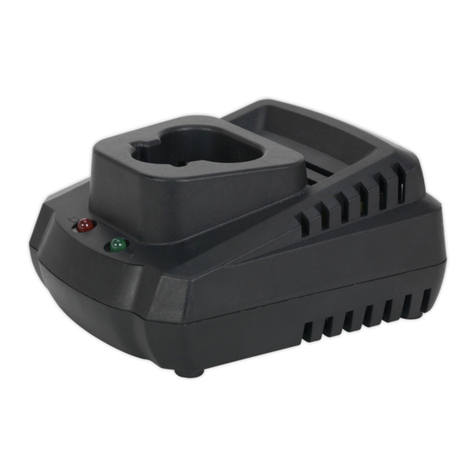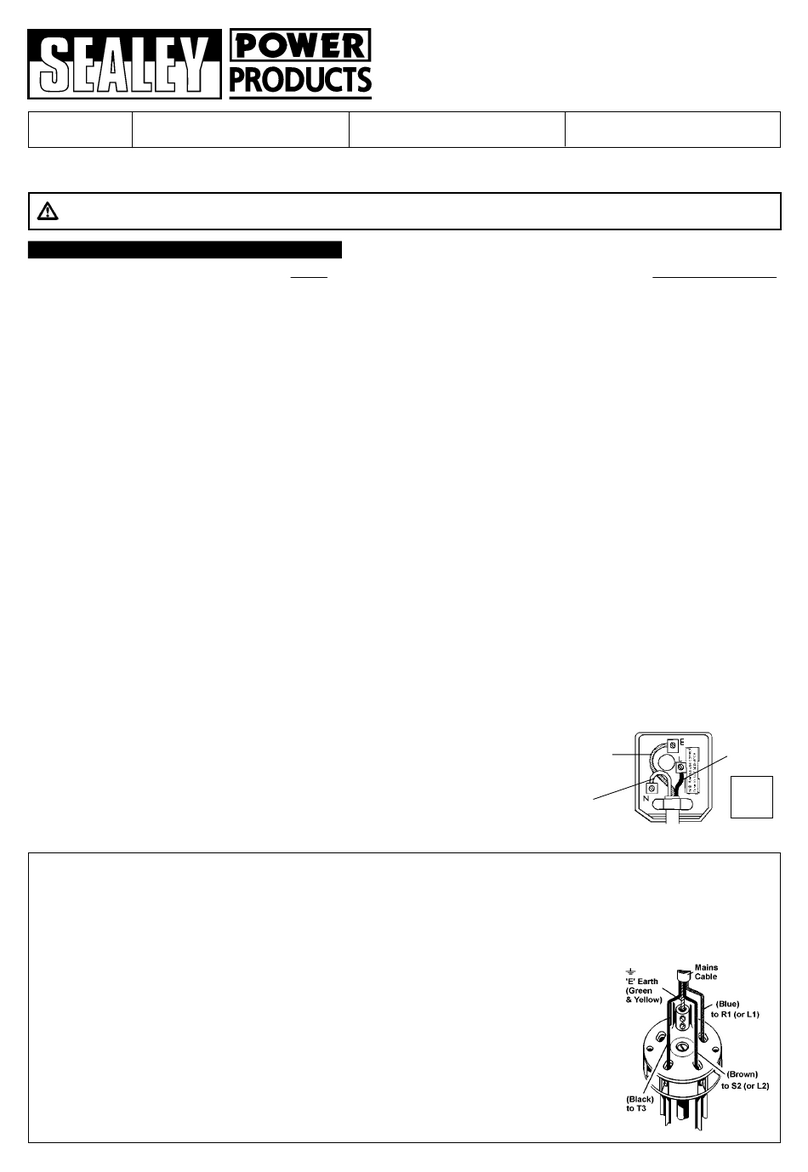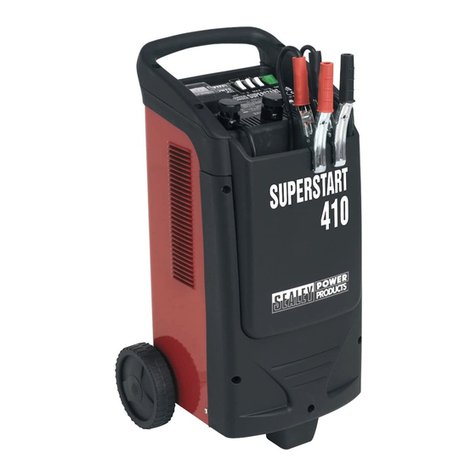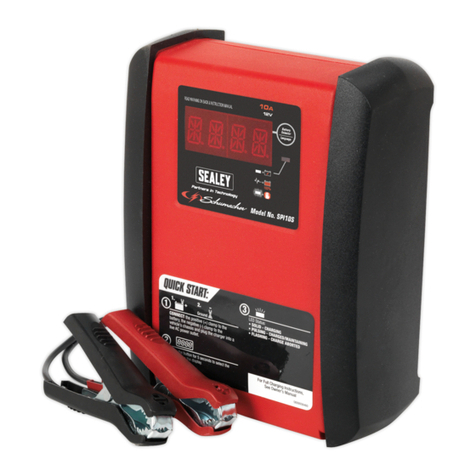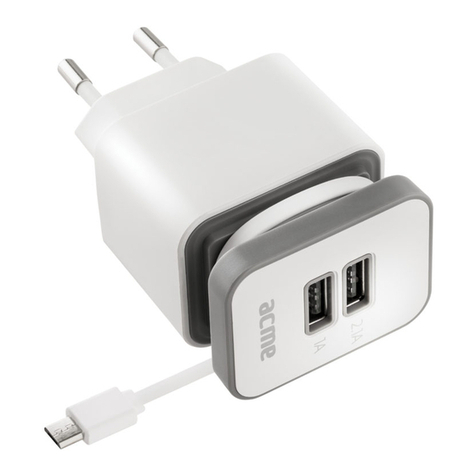
6.9. Maintain Mode
6.9.1. When the CHARGED LED is lit, the charger has started Maintain Mode. In this mode, the charger keeps the battery fully charged
by delivering a small current when necessary. The voltage is maintained at a level determined by the battery type selected.
NOTE: If the charger has to provide its maximum maintain current for a continuous 12 hour period it will go into Abort Mode. This is
usually caused by a drain on the battery or the battery could be bad. Make sure there are no loads on the battery. If there are, remove
them. If there are none, have the battery checked or replaced.
6.10. Maintaining a Battery (3A Charge Rate)
This charger has a maintenance setting that maintains both 6 and 12 volt batteries, keeping them at full charge. On this setting, it can
charge small batteries and maintain both small and large batteries. We do not recommend charging a large battery on the
maintenance setting.
NOTE: The maintain mode technology utilized in this charger allows you to safely charge and maintain a healthy battery for extended
periods of time. However problems with the battery, electrical problems in the vehicle, improper connections or other unanticipated
conditions could cause excessive current draws. As such, occasionally monitoring your battery and the charging process is
recommended.
6.11. Using the Engine Start feature 12V Only
6.12. Your battery charger can be used to jump start your car if the battery is low. Follow these instructions on how to use the ENGINE
START feature.
IMPORTANT: Using the ENGINE START feature WITHOUT a battery installed in the vehicle could cause damage to the vehicle’s
electrical system.
NOTE: If you have charged the battery and it still will not start your car, do not use the ENGINE START feature, it could damage the
vehicle’s electrical system.
6.12.1. With the charger plugged in and connected to the battery and chassis (see section 4), press the CHARGE RATE button until the
ENGINE START LED is lit.
6.12.2. This product is rated for 5 seconds of engine cranking. Crank the engine until it starts or 5 seconds pass. If the engine does not start,
wait 3 minutes before cranking again. This allows the charger and battery to cool down.
NOTE: During extremely cold weather, or if the battery is under 2 volts, charge the battery for 5 minutes before cranking the engine.
If the engine fails to start, charge the battery for 5 more minutes before attempting to crank the engine again.
IMPORTANT: DO NOT leave the charger in Engine Start Mode for more than ten minutes at a time, or you may damage the charger.
NOTE: If the engine does turn over but never starts, there is not a problem with the starting system; there is a problem somewhere else
with the vehicle. STOP cranking the engine until the problem has been diagnosed and corrected.
6.13. Engine Starting Notes
During the starting sequence listed above, the charger is set to one of three states:
Wait for cranking – The charger waits until the engine is actually being cranked before delivering the amps for engine start and will
reset if the engine is not cranked within 15 minutes. (If the charger resets, it sets itself to the default start up settings). While waiting for
cranking, the digital display shows .
Cranking – When cranking is detected, the charger will automatically deliver up to its maximum output as required by the starting
system for up to 5 seconds or until the engine cranking stops.
The digital display shows a countdown of the remaining crank time.
Cool Down – After cranking, the charger enters a mandatory 3 minute (180 second) cool down state. The digital display indicates the
remaining cool down time in seconds. It starts at 180 and counts down to 0. After 3 minutes, the digital display will change from
displaying the countdown to displaying . . The CHARGING LED will then be lit.
6.14. Using the Battery Voltage Tester
6.14.1. With the charger unplugged from the mains outlet, connect the charger to the battery following the instructions given in sections 4.
6.14.2. Plug the charger mains cable into a mains outlet.
6.14.3. If necessary, press the BATTERY TYPE button until the correct type is indicated.
6.14.4. Read the voltage on the digital display.
NOTE: After 10 minutes, the charger will automatically switch from tester to charger.
6.15. Tester and Charger: When rst turned on, the unit operates only as a tester, not as a charger.
6.15.1. Selecting a charge rate activates the battery charger and deactivates the tester. Pressing the CHARGE RATE button when the
ENGINE START LED is lit (except during the 180 second cool down) will shut off the charger and activate the tester.
6.16. Power-Up Idle Time Limit: If no button is pressed within 10 minutes after the battery charger is rst powered up, the charger will
automatically switch from tester to charger if a battery is connected. In that case, the charger will be set to the start up default settings.
6.17. Testing After Charging: After the unit has been changed from tester to charger (by selecting a charge rate), it remains a charger. To
change the battery charger back to a tester, press the CHARGE RATE button until all charge rate LEDs are off.
NOTE: The battery tester is only designed to test batteries. Testing a device with a rapidly changing voltage could yield unexpected or
inaccurate results.
6.18. Using the Alternator Performance Tester
6.18.1. With the charger unplugged from the mains outlet, connect the charger to the battery following the instructions given in Section 4.
6.18.2. Plug the charger mains power cable into the mains outlet.
6.18.3. Start the vehicle, and turn on the vehicle’s headlights. Read the voltage on the digital display. If you get a reading between 13.4 volts
and 14.6 volts, the alternator is working properly. If the reading is less than 13.4 volts or more than 14.6 volts, have the charging
system checked by a qualied technician.
6.19. Fan: The charger is designed to control its cooling fan for efcient operation. It is normal for the fan to start and stop when
maintaining a fully charged battery. Keep the area near the charger free of obstructions to allow the fan to operate efciently.
7. MAINTENANCE
7.1. After use and before performing maintenance, unplug and disconnect the battery charger (see section 4).
7.2. Use a dry cloth to wipe all battery corrosion and other dirt or oil from the battery clips, cords and the charger case.
7.3. Ensure that all of the charger components are in place and in good working condition, for example, the plastic boots on the battery
clips.
7.4. Servicing does not require opening the unit, as there are no user-serviceable parts.
7.5. All other servicing should be performed by qualied service personnel.
Original Language Version
© Jack Sealey Limited SCI90S.V2 | Issue:2 (1) 15/11/19
